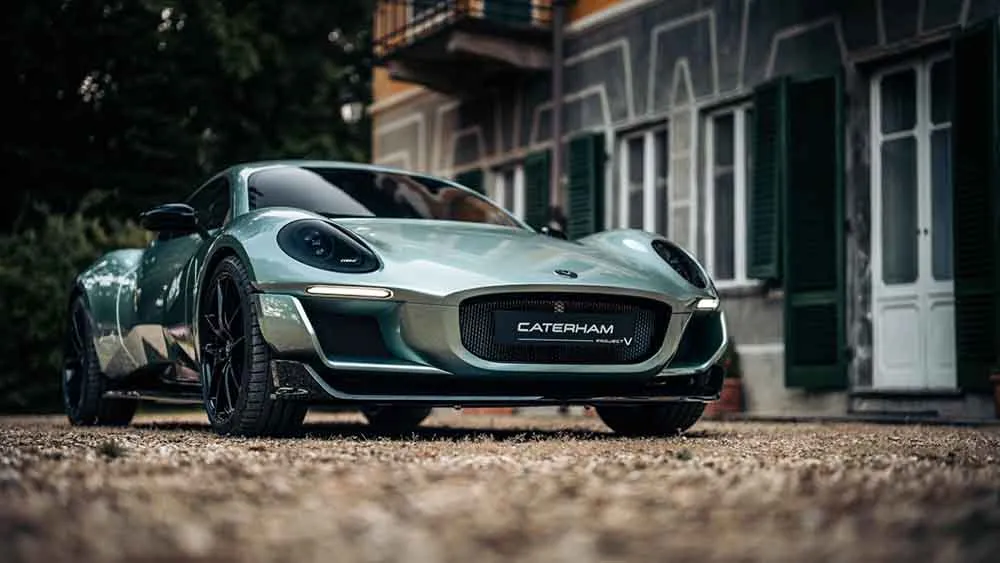Remember the Caterham Project V? It was introduced last year at the Goodwood Festival of Speed as a concept car designed by Italdesign, featuring an impressively low curb weight of just 2,623 pounds.
However, it was far from a one-off display, as the British automaker has serious plans to bring this model into production. Today, it has been revealed that Yamaha will provide the electric powertrain for the upcoming coupe.
The Project V is now transitioning from concept to prototype, with engineering assistance from the Japanese firm Tokyo R&D. The prototype is expected to be completed by mid-2025, with full-scale production anticipated to begin in 2026.
While Caterham hasn’t shared specific details about the Yamaha electric motor, it’s worth recalling that the original Project V concept was rear-wheel drive and boasted 268 horsepower.
The concept that debuted at Goodwood featured a 2+1 seating configuration, though Caterham also hinted at the possibility of a 2+2 layout. Performance figures included a 0 to 62 mph sprint in under four seconds and a top speed of 143 mph.
The coupe was equipped with a 55-kWh lithium-ion battery, providing a range of 249 miles based on the optimistic WLTP cycle. It also supported DC fast charging at 150 kW, allowing for a 20% to 80% charge in about 15 minutes.
Since concept cars are often developed with a mix of parts, Caterham borrowed components from other vehicles during Project V’s design phase, all while maintaining high standards.

For instance, it used Maserati seats and the door aperture from an Audi TT. Some of these off-the-shelf parts are likely to remain in the production model to help keep costs down.
Although Yamaha has never built its own car, it has a long history of involvement in the automotive industry. In the mid-2010s, the company teased an MX-5 Miata rival that never made it to production.
Decades earlier, Yamaha worked with Toyota to create the iconic 2000GT in the 1960s and was responsible for engineering Ford’s V-6 and V-8 SHO engines.
Perhaps Yamaha’s most famous contribution to the car world was its involvement in the development of the legendary Lexus LFA, particularly its naturally aspirated V-10 engine.
The company has also worked on a variety of other projects, including the Volvo V-8 and the four-cylinder engines for the Toyota Celica, MR2, and Lotus Elise.
Not to mention Yamaha’s Motiv concept and the short-lived OX99-11 supercar from 1992, which was slated to enter production with a V-12 engine.
Despite its focus on electric powertrains for the Project V, Yamaha hasn’t fully abandoned internal combustion engines.
The company has recently experimented with hydrogen-powered engines, modifying a golf cart and a buggy to run on hydrogen-burning combustion engines.

